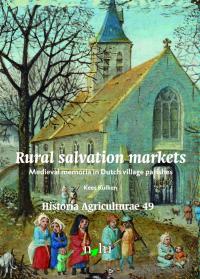Rural salvation markets: Medieval memoria in Dutch village parishes
Synopsis
Memoria, the liturgic commemoration of the dead, figures in this study as a unifying perspective on the economic, social, and cultural aspects of village life in the late medieval northern Low Countries.
Against the background of Erik Thoen’s model of social agrosystems, a set of 56 rural parishes of which local memoria registers have been preserved is analysed.
This study shows, among other aspects, how rural salvation markets developed; how kinship, social stratifications, and translocal networks were reflected in these registers; and how liturgy and loyalties shaped medieval villages as imagined communities in which care for the salvation of deceased villagers played a major role.
Cover design: Frank de Wit
Design and lay-out: Hanneke de Vries
Cover illustration: Villagers carrying candles to church for Candlemas on a
miniature from a book of hours by Simon Beningh (fl. Bruges 1500-1562). The
J. Paul Getty Museum, Los Angeles, Ms. 50.
Downloads

Downloads
Published
Series
Print ISSN
Categories
License

This work is licensed under a Creative Commons Attribution-NonCommercial-NoDerivatives 4.0 International License.



